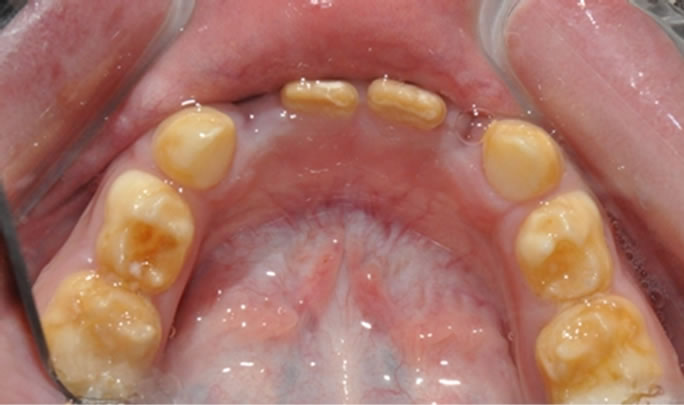Amelogenesis imperfecta is a developmental dental disorder that significantly impacts the structure and appearance of teeth.

Table of Contents
A Comprehensive Overview
Amelogenesis imperfecta is a developmental dental disorder that significantly impacts the structure and appearance of teeth. Characterized by defects in the enamel, this condition leads to various dental abnormalities that can range from mild to severe. Individuals with amelogenesis imperfecta often present with teeth that are unusually small, discolored, pitted, or grooved, and more susceptible to rapid wear and breakage. This article aims to provide an in-depth understanding of amelogenesis imperfecta, including its causes, symptoms, types, and treatment options.
What Causes Amelogenesis Imperfecta?
Amelogenesis imperfecta is primarily a genetic condition, which means it can be inherited from one or both parents. Several factors contribute to the development of this disorder:
- Genetic Mutations: Mutations in specific genes that are responsible for enamel development may lead to the disorder. These genes include:
-ENAM : Involved in enamel matrix formation.
-MMP20: Essential for processing enamel proteins.
- Inheritance Patterns: The disorder can follow different inheritance patterns:
-Autosomal Dominant: Only one copy of the mutated gene is enough to express the disorder.
-Autosomal Recessive: The individual must inherit two copies of the mutated gene, one from each parent.
-X-linked: Mutations are located on the X chromosome, predominantly affecting males.
- Environmental Factors: Although amelogenesis imperfecta is primarily genetic, some environmental factors affecting enamel development during pregnancy or early childhood may contribute to the condition.
Symptoms and Clinical Features
Individuals with amelogenesis imperfecta typically exhibit a range of symptoms. The severity and combination of these symptoms can vary significantly, but the most common features include:
- Discoloration: Teeth may appear yellow, brown, or gray, affecting the aesthetic of an individual's smile.
- Structural Abnormalities: This condition can cause teeth to be:
- Smaller than average.
- Pitted or grooved, creating an uneven surface.
- Weakness and Fragility: Affected teeth are prone to excessive wear and breakage due to compromised enamel integrity.
- Sensitivity: Individuals may experience heightened sensitivity to temperature variations or sweet stimuli due to the lack of protective enamel.
Types of Amelogenesis Imperfecta
Amelogenesis imperfecta is classified into different types based on specific characteristics of enamel abnormalities. These types include:
1.Hypoplastic Amelogenesis Imperfecta:
- Characterized by reduced enamel thickness.
- Enamel may be rough and pitted in appearance.
2.Hypomaturation Amelogenesis Imperfecta:
- The enamel is of normal thickness but has a mottled appearance and is softer than normal.
- Teeth may be discolored and prone to wearing down more quickly.
3.Hypocalcified Amelogenesis Imperfecta:
- Enamel is poorly mineralized, resulting in a soft and thin layer that can be scratched easily.
- Teeth tend to be discolored and deteriorate rapidly.
4.Complex Amelogenesis Imperfecta:
- In this type, various traits of the other types can be present, leading to significant variability in clinical presentation.
Treatment Options for Amelogenesis Imperfecta
While there is no cure for amelogenesis imperfecta, several treatment options aim to manage symptoms and improve the patient’s quality of life. Effective treatment often depends on the severity of the condition:
1. Preventive Care:
- Regular dental check-ups to monitor tooth health.
- Use of fluoride treatments to strengthen remaining enamel.
2. Restorative Dentistry:
- Bonding: Applying tooth-colored resin to improve aesthetics and protect weakened teeth.
- Crowns: Covering and protecting significantly damaged or discolored teeth.
- Veneers: Porcelain shells that adhere to the front surface of teeth for cosmetic enhancement.
3. Orthodontics:
- In some cases, braces or other orthodontic treatments may be recommended to align teeth properly.
4. Education and Counseling:
- Informing patients on proper oral hygiene practices to prevent additional damage.
Conclusion
Amelogenesis imperfecta is a complex genetic disorder that profoundly impacts dental health and overall quality of life. Understanding this condition is crucial for early diagnosis and effective management. Patients experiencing symptoms related to amelogenesis imperfecta should consult with dental professionals who can provide tailored treatment strategies. As research advances, future developments may offer more effective solutions for managing this challenging condition, emphasizing the importance of continual learning and adaptation in dental care practices. Through awareness and intervention, individuals affected by amelogenesis imperfecta can still maintain healthy teeth and smiles.
Tags
syndromes



